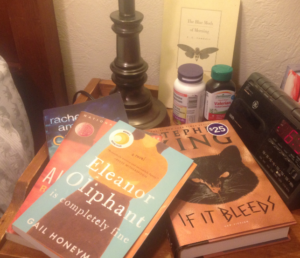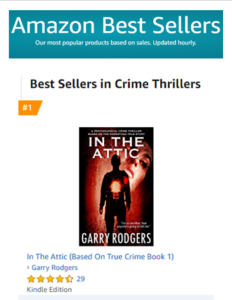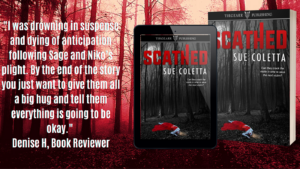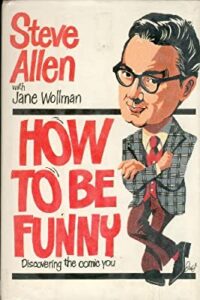Monthly Archives: December 2020
Time For Merry Rest
by James Scott Bell
@jamesscottbell
 “God rest ye merry, gentlemen.”
“God rest ye merry, gentlemen.”
One of the oldest Christmas carols, going back at least to the early 1700s, has a curious comma in it. I daresay most carolers and children who have sung this holiday favorite think the lyric is God rest ye, merry gentlemen. But if you step back a moment, an obvious question arises: if the gentlemen are already merry, what need is there for God to give them rest?
Indeed, the next verse indicates the gents are in some “dismay.” The rest of the stanza reminds them of the Savior and being saved from “Satan’s power.” These are “tidings of comfort and joy.”
The actual lyric places the comma here: God rest ye merry, gentlemen. In other words, may God grant you rest and make you merry, you gentlemen who are bustling around full of anxiety over this and that, and forgetful of the true meaning of Christmas.
Anyone out there carrying around an excess of anxiety these days? Okay, you can all put your hands down now. (Reminds me of the Drew Carey joke: “Hate your job? There’s a group for that. It’s called Everybody, and we meet at the bar.”)
We all can use some merry rest! To get practical, may I make three December suggestions:
- Watch less news
None at all might be the best idea. You can catch up in January. Use the time to finally get around to that book you’ve wanted to read. Watch a holiday movie or two (yes, you can include Die Hard if you like). Mrs. B and I are listening to more classical music. We set the radio to KUSC, 91.5 FM in L.A., and leave it on in the background. So much more restful than the sniping prattle of the Fourth Estate.
- Do something for someone else
Let’s bring kindness back into fashion. Go out of your way to open a door for someone. Let that car go in front of you in the fast food line. If you walk by a cop, firefighter, paramedic or soldier, say, “Thank you.”
Donate to a charity.
“At this festive season of the year, Mr. Scrooge,” said the gentleman, taking up a pen, “it is more than usually desirable that we should make some slight provision for the poor and destitute, who suffer greatly at the present time. Many thousands are in want of common necessaries; hundreds of thousands are in want of common comforts, sir.”
- Write a blessings letter
Your grandmother used to tell you, “Count your blessings.” Take some time to write them down. I know it is harder for some than others. Suffering is part of our world, and always will be. But reminding ourselves of what we can be thankful for is a healing balm. Indeed, studies over the past decade have found that people who consciously count their blessings tend to be happier and less depressed. Anybody up for that?
We’ve just been through a year like no other in our lifetime, and up ahead things look foggy still. Let’s resolve to do 2021 the pulp fiction way:
Keep Calm and Type On
We now bring the curtain down on another year at Kill Zone. Can you believe it? We’ve been here since August, 2008! A pause to catch our collective breath is called for, so tomorrow we begin our annual two-week hiatus. See you right back here on January 4.
Until then, God rest ye merry, TKZers!
…Reflection…Giving…Planning
Past, Present, and Future
Leave a Legacy
By Steve Hooley
It is the time of year when we reflect on the past, give gifts during the holidays, and plan for the future. So, how does that relate to writing? Can we learn from the history of writing to plan for the future of our writing? It has been said, “Those who fail to learn from history are doomed to repeat it.” (Winston Churchill, 1948, a paraphrase from George Santayana, 1905). And from geometry we learn that it takes two points to define the trajectory of a line. Could those two points be the past and the present? And does the trajectory of that line give us any clues about the future?
The Past – Reflection
For the past, we turn to British and American literature. Now, I am out of my element on this topic. I studied math and science in college. So, those of you English and literature experts, please help me out here.
For a listing of the periods or eras in British and American literature, I turned to Wikipedia. Here is what I found:
British Literature – periods and eras
Old English lit. – 658-1100
Late Medieval – 1066-1485
Renaissance
- Elizabethan era – 1588-1603
- Jacobean period – 1603-1625
- Late Renaissance – 1625-1660
The Restoration – 1660-1700
18th Century
- Augustan age – 1701-1798
- Roots of Romanticism – 1750-1798
Romanticism – 1798-1837
Victorian lit. – 1832-1900
Twentieth Century
- Modernism and cultural revival – 1901-1945
- Late modernism – 1946-2000
21st Century lit.
American Literature
Colonial lit.
- Early prose
- Revolutionary period
Post-independence
- First American Novel
19th Century – Unique American style
Late 19th Century – Realist fiction
20th Century prose
- 1920s
- 1930s – Depression era
Post WWII fiction
- Novel
- Short story
Contemporary fiction
I have gone back and reread “classics” from the 1800s in my attempt to educate myself. I have been surprised repeatedly by how much styles have changed from then until now. Many of those books contain techniques which we are now encouraged to avoid: omniscient POV, head-hopping, author intrusion, slow pace and entry into the story, lengthy description, tell don’t show, etc.
There were many cultural, societal, and economic reasons why those styles worked then, but wouldn’t work now. What can we learn from them?
Before we move from past to present, here is a link to John Gilstrap’s post from three days ago. John’s post It is a fantastic history of the publishing industry over the past quarter century.
The Present – Giving
We give gifts in the present. Do you consider your books and stories a gift to the future? If a gift is handed down to descendants and it is considered to be of value, it is a “legacy.” Are your books a legacy? Do you want them to be a legacy?
On a side note, but still about giving, today is “Goose Day.” If you investigate the secular tradition of “The Twelve Days of Christmas” and gift giving, you discover that we start with the 12th gift on December 13th and work our way down to the 1st gift on December 24th. This is December 19th, so if you are looking for a gift for your “true love,” it’s six geese a layin’ today. And hopefully, some of those geese will be layin’ gold eggs. Now, that’s a legacy.
The Future – Planning
If we wish our books/stories/wisdom to be a legacy, of value for the future, and maybe for us if we’re still around, how do we plan for that? Does our writing, or the way we publish, need to change? Can we predict trends for the future based on what has happened in the past and what is happening now? How will writing, publishing, and reading change? And how do we best position our writing to be ready for those developments?
- What era/period from the past would you choose to write in, if you could choose?
- Why did you pick that era/period?
- What new developments for writing/publishing/marketing/reading do you see coming in the future?
- Do you plan to position yourself for coming trends? How?
- Publishers Weekly says it’s about “what’s new and what’s next.” If you subscribe, what can you share about expected coming trends?
Reader Friday – Turn Back the Clock
 Take a trip back through time. You’re a little kid–maybe in the 4-6 year-old range. Santa (or Hanukkah Harry, or St. Nick, or whoever is in charge of delivering presents for special occasions) has arrived with his bag, and he’s brought you the one gift you explicitly asked for. The one you’ve been dreaming of. That you’ve tried so hard to be good for.
Take a trip back through time. You’re a little kid–maybe in the 4-6 year-old range. Santa (or Hanukkah Harry, or St. Nick, or whoever is in charge of delivering presents for special occasions) has arrived with his bag, and he’s brought you the one gift you explicitly asked for. The one you’ve been dreaming of. That you’ve tried so hard to be good for.
This is “The World Revolves Around Me” time. Pure selfish, unadulterated greed. What did you ask for?
And whatever you celebrate, I hope you get what you want this year!
What’s on Your Nightstand?
There’s a saying that goes, “Where you’ll be five years from now depends on the people you meet, the conversations you have, and the books you read”. I don’t know who said it, but I say it holds truth. Especially books you read… like the ones on your nightstand.
I’ve always been a reader. Not sure if the right adjective is voracious, avid, or anal, but I love to read. It’s in my blood, and the blood I begat, and the blood I married. My family members are all readers. So are most of my friends and colleagues.
My dad got lost for hours reading everything from newspapers to classics. My sister, who’s a lioness of a reader, said if my dad were alive when the internet arrived, we’d never have gotten him off it. My mum held a Masters in English Lit, and she wrote her thesis on Thomas Hardy. To no surprise, mum was a teacher who loved to teach kids to love to read.
 Our kids were very young when they were born, so it was easy for my wife and I to mould them into our reading cult. I turned Aesop’s Fables into “stupid stories” to get bedtime bladder-relieving belly laughs from Emily and Alan. Rita, my wife, sensibly read Harry Potter to them so convincingly that they hated the movies because they didn’t sound like their mom’s character versions.
Our kids were very young when they were born, so it was easy for my wife and I to mould them into our reading cult. I turned Aesop’s Fables into “stupid stories” to get bedtime bladder-relieving belly laughs from Emily and Alan. Rita, my wife, sensibly read Harry Potter to them so convincingly that they hated the movies because they didn’t sound like their mom’s character versions.
Now our kids are all growed up. Thankfully, they turned out all right because they’d rather read than work, and that’s proven because both took leave from their jobs and went back to university. At least this time, mom and dad aren’t paying.
 Now mom and dad are empty nesters who love nothing better than hang around and read. Rita and I read a lot. We have so many books that our insurance provider required a structural engineer to approve our book cases for fear of someone being killed in a catastrophic collapse.
Now mom and dad are empty nesters who love nothing better than hang around and read. Rita and I read a lot. We have so many books that our insurance provider required a structural engineer to approve our book cases for fear of someone being killed in a catastrophic collapse.
Seriously, though, we have serious stuff on our nightstands. But as close as Rita and I have been during our 37 married years, we have significantly different reading interests. Same with our kids—Emily, 32 and Alan, 30—and that’s a good thing because we all keep on reading.
My wife and kids stepped up for this Kill Zone piece. I polled them on their nightstands. I asked them to list five books they recently read, were currently reading, or had purchased and intended to read next (the TBR list). Here’s five reads on each of the Rodgers family nightstands.
Garry Rodgers
- Podcasting For Dummies — Tee Morris / Chuck Tomasi (Take note, Sue Coletta) 🙂
- Profiles in Folly – History’s Worst Decisions & Why They Went Wrong — Alan Axelrod
- Sapiens – A Brief History of Humankind — Yuval Noah Harari
- Fortunate Son — John Fogerty
- The Cobra — Frederick Forsyth (re-read)
Rita Rodgers
- The Blue Moth of Morning — Poems by P.C. Vandall (Rita’s friend)
- If It Bleeds — Stephen King
- The Goldfinch — Donna Tartt
- Eleanor Oliphant is Completely Fine — Gail Honeyman
- The Alice Network — Kate Quinn
Emily Rodgers
- The Flames — Leonard Cohen
- The Story of the Human Body — Daniel E. Lieberman
- Saints for All Seasons — John J. Delaney
- Ten Poems for Difficult Times — Roger Housden
- The Bible
Alan Rodgers
- The 7 Habits of Highly Effective People — Stephen R. Covey
- How to Win Friends and Influence People — Dale Carnegie
- The Daily Stoic — Ryan Holiday
- Rogue Trader — Andy Hoare
- Johnathan Strange & Mr. Norrell — Susanna Clarke
That’s the Rodgers reads. What about you Kill Zoners? Let’s read what TKZ contributors and followers have on the nightstands. Go ahead and list five books you’ve recently read, are now reading, or have on the TBR list. That includes paper, digital, or however you like to read.
———
 Garry Rodgers is a retired murder cop with a second career as a guy no one wanted an appointment with — Dr. Death, the coroner. Now Garry passes himself off as an indie crime writer who checks his Amazon sales stats every half hour.
Garry Rodgers is a retired murder cop with a second career as a guy no one wanted an appointment with — Dr. Death, the coroner. Now Garry passes himself off as an indie crime writer who checks his Amazon sales stats every half hour.
Speaking of crime writing, Garry Rodgers has six books out in a twelve part Based-On-True-Crime series. Garry’s first one, In The Attic, is available for FREE on Amazon, Kobo, and Nook. Help yourself to one for the holidays!
What A Difference A Quarter Century Makes
My first novel, Nathan’s Run, first hit the shelves in 1996–two millennia ago in book-time. To put it in perspective, Bantam, Doubleday and Dell were all different publishers back then. Simon & Schuster and HarperCollins were independent companies. Back then, the big money came to authors via mass market paperback deals because jobbers filled book racks in every pharmacy and grocery store, and everybody read paperbacks. Mass market rights often were sold to different publishers than the hard cover houses, and for much more money.
Borders Books and Barnes and Noble were just beginning to spread their wings, targeting local bookstores with extreme prejudice. In the mid-nineties, independent bookstores were the backbone of book sales. Every strip mall, it seemed, had its own bookstore. Some were generalists, selling all kinds of books, but others were specialty stores, targeting specific genres. Mystery bookstores grew like weeds.
When the superstore booksellers entered the scene, they were able to negotiate terms with publishers that allowed them to price books at retail for less than what the independents had to pay for wholesale. When really big books hit the scene, it seemed to me (though I could never prove it) that the superstores waded into predatory pricing, selling the books for less than what they paid as loss leaders that would force the mom and pop shops out of business.
Meanwhile, a guy named Bezos was a laughing stock throughout the publishing world because he had this crazy idea that people would buy books from their computers–no, really, their computers! Have you ever heard something so silly? As if book lovers would give up glorious trips to the local bookstore in favor of shopping on one of those squealy dial-up modem desk toys. At the same time, a kid named Steve Case was toiling like mad to create a platform that would give everyday people access to a thing called the internet.
In the mid-nineties, the competition among publishers to acquire the Next Big Book was cutthroat. Authors and their agents had so many big houses to choose from! And the result often ended in bidding wars or pre-emptive bids that routinely netted six- and seven-figure deals for first-time authors.
Money flowed in torrents. Big producers at major film studios paid real money to interns and assistants in the major publishing houses to steal manuscripts from the copy room to give the studios a leg-up on the inevitable bidding war for film rights. During the Christmas season back in the day, every publishing house threw lavish holiday bashes for their staffs, authors, agents and media.
Hands down, the most jaw-droppingly over-the-top book affair I’ve ever attended was a Christmas party thrown by Readers Digest Condensed Books at the New York Palace Hotel in New York (formerly the Helmsley Palace). Limitless beef, salmon, shrimp, caviar, Champaign, booze and desserts served to every author, editor and agent in the world, it seemed. There had to be a thousand people there, including every author who’d ever had a book included in a collection by RD. As a kid from Virginia whose first book was about to be released, this was heady stuff.
(Teaser: The most opulent party ever was the three-day celebration of Dino DeLaurentiis’s birthday on the Island of Capri. That was beyond amazing, and a very funny story. Maybe in a future post.)
Within a few years, everything changed. I don’t remember the order in which they fell, but over the course of what felt like a few months, overseas corporations consumed dozens of imprints and the number of “Big Houses” started to contract. The contraction never stopped. The recent news of Penguin Random’s purchase of Simon & Schuster saddens me. All I see are diminishing opportunities for writers earn big advances for their books. Think about it. Penguin Random (a part of the Bertelsmann empire) has assimilated once-grand independent publisher names such as Penguin, Random House (duh), Bantam, Doubleday, Dell, Viking, Knopf, and others. And it doesn’t stop with the the Bertelsmann empire. Hachette is another, and there are still more.
Meanwhile, Karma being a be-otch, Borders Books is dead, and B&N is moribund at best. (In a happy bit of irony, B&N’s new CEO, James Daunt, is designing the company’s phoenix-like rise from its ashes on the direct involvement of on-the-ground booksellers in the decisions on what books individual stores should stock. You know, the way booksellers used to do it before the superstores ran them out of business.)
Independent bookstores are making a comeback (albeit very slowly and cautiously), and new publishing houses are being born every day.
While the bookracks in drug stores are gone, more books are published every year nowadays than have ever been published before. Ebooks, audio, graphic novels, and Lord only knows how many other new avenues for storytelling are exploding. While all these options bring limitless opportunity, they also bring limitless problems, not the least of which is discovering the new metrics and strategies for letting readers know that a new author has arrived on the scene. Those full-page ads in major dailies that used to grease the skids to bestsellerdom, are all but irrelevant now. Word of mouth has morphed into tweet-to-tweet (or something like that).
These are exciting times to be an author. But they’re also scary times. Million-dollar advances have gone the way of the dodo (or of Borders Books) and that’s probably a good thing in the long run. It makes a lot of sense to align advances with anticipated sales. Hollywood is an evolving train wreck, but it will straighten itself out, too. I’d hate to own a theater chain right now, but man oh man would I like to invest in big screen televisions for the home market.
As I write this post, it occurs to me that as the business fluctuates and expands and contracts, the one constant to all of it, through all of time, is the public’s insatiable desire for good stories, well told. And that, TKZ family, is where we come in. If we don’t think this stuff up and put it on paper, the whole of the entertainment business breaks down.
I’d love to hear any thoughts you might have.
Finally, this is it for me here in The Killzone for a few weeks as we take our winter hiatus. Thank you all for making this blog what it has become. Contributors, you force the rest of us to keep the bar high. Readers, you’re the reason we do it, and your numbers speak for themselves. Thank you. I wish you all a wonderful holiday season, and a prosperous, healthy and happy new year.
God bless us, every one.
The “Last” First Page Critique:
It’s A Jungle Out There
By PJ Parrish
This is my last post of the year before we take our annual holiday break. That means I have an excuse to post a picture of my dogs. Merry Christmas from Phoebe and Archie! Woof.
It also means I have the pleasure of reading my final First Page Critique of 2020, and offering it up to the TKZ hive for comments. It’s a medical thriller, and we’re off to the jungles of Jakarta. The plane is on the runway. Catch you on the return trip, crime dogs.
The Lazarus Outbreak
Republic of Nanga Selak, 650km Northwest of Jakarta
The scientists were late for their pickup.
Danni Lachlan swore and checked her watch again. She paced back and forth while staying in the shadow cast by her Cessna. The nose of the twin-engine plane pointed resolutely down the ribbon of dirt that barely qualified as a takeoff and landing strip.
Palm-leafed trees and vines dotted with colorful orchids still clung to the edges of the recently cleared space. Smells of rotting vegetation and jungle flowers hung in the air. The odd mix of scents reminded Lachlan of a perfumed burial shroud.
A shiver ran down her spine at the thought.
“Never should’ve taken this damn job,” she muttered under her breath.
She dug into a pocket before coming up with a cigarette and a lighter. She took a moment to light up before drawing breath and exhaling a cloud of smoke. The nicotine habit and the bush pilot company were all her ex-husband had left her. She’d made the best of both to keep sane and put food on the table.
Lachlan’s head jerked up as she heard a cry.
It could’ve been a human cry, but the jungle had a hundred ways of distorting sound. Her pulse started to pound as something made a loud rustle.
Suddenly, three people in silvery protective clothing tore free of the underbrush. The name CLARK had been stenciled in black across the chest of one, WIJAYA on another. The silver-suited one in the middle hung limply in the arms of the other two. The name HAYES was barely visible as the other two dragged their companion along.
A demented howl erupted from the tree line. Then a flicker of movement came from the bushes nearby. Clark and Wijaya traded a glance.
They dropped Hayes in the dirt and ran towards the plane.
“What is it?” Lachlan shouted. “What’s going on?”
The two scientists tore off their respirator masks and tossed them away as they ran. Wijaya’s coppery face stared blankly in fear. Clark’s was a mirror image in pale white.
“Start the plane!” Clark cried. “Get us out of here!”
Lachlan stared a moment longer.
Hayes’ body lay face down. It began to quiver. Arms and legs drummed mindlessly against the moist earth.
More flickers of moment in the underbrush. The sounds of something tearing its way through the underbrush. That finally broke Lachlan’s horrified stare and got her moving.
_________________
Let’s start with what works. We’re at a good dramatic moment, which is often a great entry point for a story. (Caveat: You needn’t always start with something this “action” oriented. A dramatic movement can be more subtle). The writer chose a good moment, just before the proverbial $%&^ hits the propellers.
I like how we get just the barest snippet of backstory — that she’s got a bad marriage behind her that makes her a bit bitter. I don’t mind that at all…it intrigues me, character-wise. Notice that the writer did not feel compelled to belabor Danni’s past or state of mind. Get the plot moving first! You can always layer in her past in “quiet” moments later.
A note: The writer could have opened right with the sound of the men breaking through the brush dragging their comrade toward the plane. That’s certainly more action-y. But I like the fact we get to “meet” the heroine first, as she waits for the rendezvous.
I like the location. Never been to Jakarta (closest I got to a jungle was my backyard in South Florida). The atmosphere and sense of isolation is nicely rendered. Good uses of senses beyond sight. Smell is oft-neglected in description. Wondering how the air feels, though. Like standing in a sauna, I would guess. Maybe she’s feel the press of her sweat-damp shirt? Brush away a wet strand of hair? The writer makes a point of saying Danni is pacing in the “shadow of her Cessna.” Good detail but it can be sharper by making the point that it’s the only shade from the searing sun?
Description is important, especially if you’re using a foreign locale. Don’t let any chance slip by to make us feel we are there. Description, used well, can enhance the sense of peril, fear, anticipation (whatever mood you’re going for). But keep it razor-sharp, never over-wrought or too long in the early pages.
The writer is in firm grasp of basic craft, like dialogue, action choreography. We can tell pretty much what is happening here, so kudos there.
Something that confuses me. Danni is waiting for a team of scientists, as stated in the first sentence. Is she part of the team? Is she merely a pilot and thus doesn’t know them? Might want to drop in a clarifying hint. (See comments below about increasing tension)
About that first sentence. The writer sets it off all by itself in its own graph. When you do that, you’re telling the reader it is extra important. Yet the sentence itself is sort of flat and matter-of-fact. Like: “Well, damn, they’re late, so here I am again just cooling my heels.” It lacks enough drama to set up what happens next. Especially since you make a big point of Danni’s impatience. Why is she pacing? Does she know there is danger in getting this team out? The word “pick up” is just sort of blah as well. Because we don’t know Danni’s exact role here, we can’t get the full effect of the urgency you’re trying to create with this scene.
I don’t know what might work better (ideas welcome!), but I think, given the excitement of this opening scene, you can come up with a better first line.
Let’s do a quick line edit so I can bring up some other points. My comments in red.
The Lazarus Outbreak The title works fine for a medical thriller. Even if you don’t know your Bible, that Lazarus rose from the dead, it’s interesting. I just hope the use of the biblical reference ties into the plot. Like, if you’re infected, you die then are reborn ie zombies?
Republic of Nanga Selak, 650km Northwest of Jakarta I’m not a big fan of location tags but this one is okay because the action comes on so quickly, the writer doesn’t have an easy way to tell us where we are.
The scientists were late for their pickup. As I said in comments, this is too blah for this good of a scene. You’d be better off just cutting it and opening with the second graph and finding a way to slip in the “scientists” info. Maybe something like:
Danni Lachlan swore and checked her watch again. She paced back and forth, careful to stay in the shadow of her Cessna, the only relief from the blazing sun. She looked down the ribbon of dirt in front of the plane, wondering again if there was enough room to take off. The landing had been hard enough.
She came out of the shade and brought up a hand to shield her eyes as she peered into the dense jungle just ten yards away.
Where the hell were they? They knew they had only a half-hour window to get out of here.
A sharp crack made her spin to the other side of the brush.
Two men in silver hazmat suits stumbled into the open, dragging a man between them.
Danni Lachlan swore and checked her watch again. She paced, back and forth while staying in the shadow cast by of her Cessna. The nose of the twin-engine plane pointed resolutely means admirably purposeful; too human for a machine and clutters things up. down the ribbon of dirt that barely qualified as a takeoff and landing strip. Do more with this image; ie she had barely made the landing…
Palm-leafed trees and vines dotted with colorful orchids still clung to the edges of the recently cleared space. This implies knowledge on her part, so she has been here before? Or is she a team member? Clarify if you use it. ALSO: how far away is the brush from the plane? We need to know to understand the action when the scientists come running out. Smells of rotting vegetation and jungle flowers hung in the air. The odd mix of scents reminded Lachlan of a burial shroud. Again, I love that you use smells here, but can you make this sing more, be specific? The still heavy air smelled of rotting vegetation and jasmine. (I checked; it’s common in Jakarta). The mixture reminded Lachlan of a burial shroud. I don’t think this works. It sounds like YOU the WRITER describing something, not your character. Would this woman think in those images? Not unless it is in her specific sensory bank of memories. ALWAYS KEEP COMPARISONS, METAPHORS, SIMILES specific to your character’s experience. It feels more real and it helps you establish character traits. I can’t say what smell in her memory comes to her; that is for you to decide, but it has to connect to HER.
A shiver ran down her spine a cliche at the thought. BUT…if that awful smell you describe above made her shiver then that means it RESONATES with something in her past. What in her memory made her shiver at that smell? It wasn’t a burial shroud, as they aren’t common anymore.
“Never should’ve taken this damn job,” she muttered under her breath. I like this line here.
She dug into a pocket for before coming up with a cigarette and a lighter. She lit up and pulled in a quick deep breath. took a moment to light up before drawing breath and exhaling a cloud of smoke. Don’t waste words on routine actions. The nicotine habit and the bush pilot company were all her ex-husband had left her. Good! She’d made the best of both to keep sane and put food on the table.
Lachlan’s head jerked up as she heard a cry. The cry comes first, then her reaction.
It could’ve been a human cry, but the jungle had a hundred ways of distorting sound. Her pulse started to pound as something made a loud rustle. Again, action causes her reaction. Also gives you a way to get rid of the clumsy “as.” You overuse the “as” construction.
Suddenly, three people in silvery protective clothing I think she’d recognize hazmat suits and you have to put the fact they are wearing masks HERE not later because that is what she would notice first. And a note about breathing masks: They are in a jungle, it’s as hot as hell and these guys are in MASKS? What might she think? Use this moment to increase tension. SOMETHING ISN’T RIGHT HERE. EXPLOIT THAT. tore free of the underbrush. The name CLARK had been stenciled in black across the chest of one, WIJAYA on another. The silver-suited one in the middle hung limply in the arms of the other two. The name HAYES was barely visible as the other two dragged their companion along. This is important: When choreographing action, you must keep the order of the character’s recognition logical. What would Danni notice first? Names? Nope. She’d notice the men struggling to drag the third guy. If they are dragging a man, who’s apparently dying, they’d be crouched over; impossible to see their names. Plus, is it important to name them right now? Does she know them? If not, why bother?
A demented howl Not sure demented works here. It means angry or crazyerupted from the tree line. Then a flicker of movement came from the bushes nearby. Refract this through her POV somehow. Danni saw the fronds on the low palms behind the three men moving.
Clark and Wijaya traded a glance. Too casual sounding. Stay in action phrasing.
The two men heard it, too. They looked back at the jungle then at each other. They dropped the third man and ran toward the plane.
They dropped Hayes in the dirt and ran towards the plane.
“What is it?” Lachlan shouted. “What’s going on?”
This stretch of action implies they have a lot space to cover, yet you said the “runway” was a narrow ribbon carved from the jungle. Clarify this. The two scientists men tore off their respirator masks and tossed them away as they ran. Wijaya’s coppery face stared blankly in fear. Clark’s was a mirror image in pale white. This could use some work. Coppery face? Is he foreign? And he’s running for his life so I don’t think he’d have a blank stare. At this point the name CLARK on his suit might register in her consciousness but ONLY at this late point. Which might be where you to drop in the plot point that she’s ferrying out scientists. Waiting to tell the reader until now that they are scientists is a way to increase intrigue…dole out your plot one bread crumb at a time. Sometimes you want to hold facts back to make more impact later. It all about layering…
His dark face was contorted with fear. She saw the name CLARK stenciled across the front of his suit. Clark…Duane Clark, one of the three scientists she had been hired to fly out here.
“Start the plane!” Clark cried. “Get us out of here!”
Lachlan stared a moment longer. At what? Where is the second man? Again, keep her impressions of the action in a logical order. They dropped the third guy so she can’t possibly see his name. Something simple like:
The second man stumbled to the Cessna, but Lachlan’s eyes were locked on the man they had abandoned. He lay twenty feet away, face down in the dirt. His body was quivering, arms and legs drumming in the red dirt.
Hayes’ body lay face down. It began to quiver. Arms and legs drummed mindlessly against the moist earth.
More flickers of moment in the underbrush. The sounds of something tearing its way through the underbrush. That finally broke Lachlan’s horrified stare and got her moving. I think we’ve got too many “flickers” in the brush. Maybe save the howl for here so you get a fresh punch. And make it really awful. Then don’t TELL me she gets moving. SHOW me her moving.
Danni jerked open the door of the Cessna. Clark half-carried the second men the final yard to the plane and together they pushed him inside. Jumping into the pilot seat, she pushed the throttle in and hit the master switch. The Cessna roared to life, drowning out the sound of…WHATEVER THAT AWFUL HOWL WAS.
So, this is what I would call a good first draft. Nice action, an exotic location, an interesting protag. (assuming Danni is such) and lots of juicy unanswered questions. Don’t be discouraged by my bleeding red all over your pages, dear writer. As I said, this is good stuff and we all find ways to improve as we go through various rewrites. Mine is just one opinion.
Thank you, anon writer, for letting us share your work. I know how hard this is, to put your baby out there for scrutiny. I’ve had some tough editors over the years, and it took me a while to realize they were tough because they wanted me to succeed. We’re here for you.
Merry Christmas, Happy Hanukkah, all, and may the next year be…well, let’s just say brighter, healthier and a helluva lot more huggable.
Tips to Create a Series Bible
By Sue Coletta
 Lately, I’ve been consumed with creating a series bible for my Grafton County Series. So, I thought I’d share some tips to help you avoid making the same mistakes. Mistakes like thinking highlighted notes on my Kindle were enough to jog the ol’ memory bank. Mistakes like scribbling notes on scrap paper or a whiteboard. Mistakes like tabbing umpteen pages in the previous paperbacks.
Lately, I’ve been consumed with creating a series bible for my Grafton County Series. So, I thought I’d share some tips to help you avoid making the same mistakes. Mistakes like thinking highlighted notes on my Kindle were enough to jog the ol’ memory bank. Mistakes like scribbling notes on scrap paper or a whiteboard. Mistakes like tabbing umpteen pages in the previous paperbacks.
Yep. I’ve done all of the above and more. Hence why I’ve had to reread every book in the series. It’s been months since I’ve written in the Grafton County Series. When I set out to plan my WIP, I’d forgotten a lot of details. In my defense, I did write a true crime book, another Mayhem Series thriller, and new true crime proposal in between.
Though it’s fun to spend time with my characters, it’s also a ton of added work, work that could’ve been avoided if I had a series bible in place. Don’t be like me. Even if you’re writing book one, start your series bible now.
Format
We first need to decide on a format for our series bible. Some writers use Scrivener. Others prefer Evernote or a Word.doc. The most popular choice is to print the series bible and organize in a three-ring binder. Pick the format that works best for you.
Organize by Color
Choose one color for each book in the series. Every detail you list in the series bible should correspond to the book’s color.
Example…
Book 1: Blue
Book 2: Red
Book 3: Purple
Book 4: Green
By color-coding, if you need a detail from the series bible while writing, one glance will tell you when the fact occurred.
Details to Include
- Description of main characters
- Description of secondary characters
- Description of villains, including monikers (if applicable)
- Victims
- Characters’ profession
- Killers MO (if applicable)
- Pets, including deceased pets (if applicable)
- Tattoos/piercings (if applicable)
- Scars, emotional and physical
- Jewelry
- Marital status/relationships
- Important dates
- Family ties
- Themes
- Setting
- Backstory
- Housing
- Accent (if any)
- Décor
- Cherished treasures
- Timelines
- Future scene ideas
Most of the above list is self-explanatory, but I do want to point out a few things.
Character Description
An important part of the series bible is character description. Savvy readers will notice if your MC has a small ankle tattoo from her college days in book one, then claims s/he’d never be stupid enough to get one in book five or six.
In this section be sure to include the basics: hair & eye color, height & weight (approximate, if you’ve never detailed this attribute), style of dress, skin tone/complexion, tattoos & piercings (if applicable), favorite perfume/cologne, injuries and physical scars.
When I listed Sage’s injuries/physical scars, I couldn’t believe what I’d done to this poor woman. Here’s a small sample from my story bible.
- thick neck scar that tugs at the skin
- white lines zigzagging across her right forearm
- lost unborn child from rape
- scar from incised wound on right wrist
- orbital floor fracture (broken eye socket)
- fractured cheekbone
- broken nose
- faint scar from stitches on left wrist
- faint scar from stitches on upper lip
- faint scar from stitches on right cheek
- faint scar from stitches on forehead
And that’s only the first two books!
Emotional Turmoil
Since I write psychological thrillers, it’s vitally important for me to track each character’s emotional toll. Past experiences define and shape our characters into the people they are today. An emotional sketch of each character allows us to find triggers and/or weaknesses to exploit in future books. *evil grin*
Incidentally, I do the same for pets. For example, Sage and Niko have two dogs, Colt and Ruger. These dogs have lived through harrowing experiences, and they’ve developed certain habits that stem from those experiences. Animals feel things as deeply as we do. If the pets emerge unscathed, the characterization won’t ring true.
Details
Tiny details matter. For example: When Sage gets nervous, she plays with a Gemini pendant, sliding it back and forth across the necklace. Now, the pendant is turquoise and silver, but for some reason, I wrote “gold” chain in book one. Because this necklace holds sentimental value, Sage would never switch the pendant to a different chain. This minor detail has never been a problem for me. Rarely, if ever, do I mention the color of the chain. Too much description slows the pace.
But what if I decide to kill her some day? Or fake her death? That necklace could become a key piece of evidence. See what I’m sayin’? Even if we never intend to use the minor detail when we list it, we still should include it in the series bible in case we change our mind.
Smell
The nose knows! In my Grafton County Series, the medical examiner practically bathes in Aramis cologne. Anyone within fifteen feet knows he’s entered the crime scene before they ever spot him. It’s become a running joke. I could never forget that detail, but I still include it in the series bible under his name just in case.
What did slip my mind was Sage’s perfume. This might not sound like a big deal, but for this series, it’s an important detail. During tender moments, Sage’s husband Niko breathes her in. The soft aroma of Shalimar mushrooms across his face, with notes of lemon, iris, jasmine, rose, patchouli, sandalwood, and vanilla. He loves that about her. If I didn’t include this detail in the series bible, future books wouldn’t ring true.
Side tip: If you’re struggling for a scent, ask your husband/wife or significant other. We all have a scent that’s uniquely ours. Maybe they love your shampoo, skin cream, body wash, after-shave, or scented deodorant. Once you find the answer, transfer that scent to your lead or secondary character. Or show your character cooking, baking, or eating. Food is an easy way to include one of the most under-appreciated senses in fiction: smell. If the character is eating, be sure to include taste, too. Bonus!
Décor
Does your character have a favorite chair? List it in the series bible.
Does your character hate the hard sofa? Jot down why in the series bible.
Did you focus in on an antique timepiece or cuckoo clock in a past book? Describe it in the series bible.
What about a wall safe or gun cabinet? Be sure to include the combination in the series bible.
Example: After a hard day at work, Niko collapses in his Lay-Z-Boy. I’ve never described the recliner in detail. Never had a reason to. Instead, I simply wrote “Lay-Z-Boy” under Niko’s name in the series bible.
He also has a favorite coffee mug, with #1 Dad inscribed on a gold shield. If Sage poured his coffee into a different mug, fans of the series would wonder where it went.
Minor details can impact series characters in an emotional, conflict-driven way.
What if Sage came home to find Niko’s mug shattered on the kitchen floor? Better yet, what if she found it on the bedroom floor? I’ve made it a point to mention this mug in every book. It’s a Grafton County series staple. One glimpse of the shattered mug, and Sage would leap to the conclusion that someone’s been in the house. In reality Colt or Ruger might have knocked it off the counter or bureau. How it wound up on the floor isn’t important (yet). What is important is that I’ve created conflict just by showing the shattered mug.
Future Scenes
A funny thing happens while creating a story bible. Scene ideas flood the creative mind. While working on my series bible, not only have I finished planning my next Grafton County Series thriller, but I gained at least one new premise for a future book, as well. I even stormed through writing the first few chapters of my WIP. And that may be the best reason of all to create a series bible—to get the creative juices pumping in the right direction.
Can’t think of a plot for your next WIP? Review the story bible. It’s a lot easier than re-reading the entire series. Trust me on that. 🙂

Need tips for writing a series? Check out the group TKZ post.
Do you use a series bible? If you do, any tips to share? If not, what’s your process to ensure consistency throughout the series?
 His name is Paradox and he poses his victims in RED cocktail dresses, RED roses in place of eyes. He will kill again if his riddles aren’t solved within 24 hours.
His name is Paradox and he poses his victims in RED cocktail dresses, RED roses in place of eyes. He will kill again if his riddles aren’t solved within 24 hours.
Can Niko and Sage stop him before the clock runs out?
Look Inside SCATHED: https://books2read.com/SCATHED
On Using Humor in Fiction
by James Scott Bell
@jamesscottbell
 I received the following email the other day, and present it here with the sender’s permission.
I received the following email the other day, and present it here with the sender’s permission.
Dear Mr. Bell,
Your Great Courses lectures on writing best-selling fiction are packed with helpful information, and because of them I’m now making progress with my fiction-writing. But I struggle with humor, since I am not naturally funny. I rarely come out with anything that makes people laugh, and when I do, it’s usually accidental.
I’ve begun reading Try Fear, and am impressed by how masterfully you inject humor into your fiction. Would you recommend a resource for learning to write humor?
I’m a children’s writer, with a couple of non-fiction articles and one book for the educational market to my credit, but I’ve caught the fiction bug and am attempting the leap from nonfiction to fiction. I’d be grateful for any suggestions you have on learning to write humor.
Great question, and one I don’t remember addressing before.
 Let’s first distinguish between two types of book-length fiction: the humorous novel and the novel with humor. In the former case, the whole enterprise is based on getting laughs. Douglas Adams’ The Hitchhiker’s Guide to the Galaxy is a prime example. In the latter type of novel, humor is used for what the dramatists call “comic relief.” Shakespeare employed this device frequently, most famously with the gravediggers in Hamlet.
Let’s first distinguish between two types of book-length fiction: the humorous novel and the novel with humor. In the former case, the whole enterprise is based on getting laughs. Douglas Adams’ The Hitchhiker’s Guide to the Galaxy is a prime example. In the latter type of novel, humor is used for what the dramatists call “comic relief.” Shakespeare employed this device frequently, most famously with the gravediggers in Hamlet.
As to the first type, I don’t have anything to offer, except: proceed with caution. It takes a rare talent—like a Douglas Adams or a Carl Hiaasen—to succeed with this kind of novel. Also note that comic novels don’t sell much as compared to their more serious cousins. Early in his career Dean Koontz tried his hand at a humorous novel, a la Catch-22, and determined this was not a genre that paid. Since going serious, with humor sprinkled it, Mr. Koontz has made a few bucks.
So let’s talk about humor used on occasion in an otherwise serious novel. Why have it at all? Comic relief, as the name implies, is a spot within the suspense where the audience can catch its breath. It delivers a slight respite before resuming the tension. It’s sort of like the pause at the top of a roller-coaster. You take in a breath, look at the nice view and then…BOOM! Off you go again. It adds a pleasing, emotional crosscurrent to the fictive dream, which is what readers are paying for, after all.
I see three main ways to weave humor into a novel: situational, descriptive, and conversational.
Situational
You can insert a scene, or a long beat within a scene, that takes its comic effect from the situation the character finds himself in. For an example I turn to the great Alfred Hitchcock, who almost always has comic relief in his masterpieces of suspense.
Like the auction scene in North by Northwest. Roger Thornhill (Cary Grant) has been mistakenly tagged as a U.S. secret agent by a group of bad guys. At one point, Thornhill walks into a fancy art auction to confront the chief bad guy (James Mason). But now he’s stuck there with three deadly henchmen waiting in the wings to send him to the eternal dirt nap.
So Thornhill hatches a plan. Act like a nut and cause a commotion so the cops will come in and arrest him, saving him from the assassins. This is how it goes down:
How do you find situational humor? You look at a scene and the circumstances and push beyond what is expected. Most humor is based upon the unexpected. That’s what makes for the punch line in a joke, for example. So make a list of possible unexpected actions your character might take or encounter, and surely one of them will be the seed of comic relief.
Descriptive
When you are writing in First Person POV, the voice of the narrator can drop in a bit of humor when describing a setting or another character. The master of colorful description was, of course, Raymond Chandler, through the voice of his detective, Philip Marlowe:
It must have been Friday because the fish smell from the Mansion House coffee-shop next door was strong enough to build a garage on. (“Bay City Blues)
From thirty feet away she looked like a lot of class. From ten feet away she looked like something made up to be seen from thirty feet away. (The High Window)
It was a blonde. A blonde to make a bishop kick a hole in a stained-glass window. (Farewell, My Lovely)
The girl gave him a look which ought to have stuck at least four inches out of his back. (The Long Goodbye)
For descriptive humor, listen to your character. Use a voice journal to let the character riff for awhile. You’ll unearth a nugget or two of descriptive gold.
Conversational
Dialogue presents many possibilities for humor. First, you can create characters who have the potential for funny talk. Second, you can take create conversational situations where such talk is possible. I had two great aunts who lived together in their later years. They had a way of subtly sniping at each other over minor matters, which was always a source of amusement to me. So I put them in my thriller, Long Lost, as two volunteers at a small hospital:
Just inside the front doors, two elderly women sat at a reception desk. They were dressed in blue smocks with yellow tags identifying them as volunteers. One of them had slate-colored hair done up in curls. The other had dyed hers a shade of red that did not exist in nature.
They looked surprised and delighted when Steve came in, as if he were the Pony Express riding into the fort.
They fought for the first word. Curls said, “May I help—” at the same time Red said, “Who are you here to—”
They stopped and looked at each other, half-annoyed, half-amused, then back at Steve.
And spoke over each other again.
“Let me help you out,” Steve said. “I’m looking for a doctor, a certain—”
“Are you hurt?” Curls said.
“Our emergency entrance is around to the side,” Red said.
“No, I—”
“Oh, but we just had a shooting,” Curls said.
“A stinking old man,” Red added.
“Not stinking,” Curls said. “Stinko. He was drunk.”
“When you’re drunk you can stink, too,” Red said.
“That’s hardly the point,” Curls said.
And it goes on like that.
I think you can develop an ear for this kind of humor by soaking in the masters of verbal comedy. Start with Marx Brothers, especially their five best movies: The Coconuts, Animal Crackers, Monkey Business, Horse Feathers, Duck Soup.
Listen to the classic conversational routines of Bob Newhart (available on YouTube). My favorite is “The Driving Instructor.”
Also on YouTube: Bob & Ray. The great thing about their skits is how they play them with dead seriousness. That’s where the humor comes from, which is a lesson for writers. This isn’t about jokes. It’s about natural humor found in a fully developed dramatic situation.
If you want to do some reading on the subject, you might pick up a copy of Steve Allen’s How to Be Funny. Allen was one of the great verbal wits.
There’s also a little gem of a book on writing comedy. It’s the nearly-lost wisdom of Danny Simon, Neil’s older brother (whom Neil and Woody Allen both credit with teaching them how to write narrative comedy). Danny Simon never wrote a book on the subject. He did teach a famous comedy writing class in Los Angeles. Thankfully, one of his students took copious notes and organized them for posterity. That student was me, and the little book is here.
The floor is now open for discussion on these matters. Meanwhile, I can’t resist leaving you with my all-time favorite Bob & Ray routine. Enjoy!
Getting Through It
Source: passionatepennypincher.com
I have been working on a couple of different posts to offer as my last for this year. One has the working title of “Prepping for the Zombie Apocalypse at Dollar Tree.” The other is tentatively named “The Two Best Books That I Will Probably Never Read. Neither Will Anyone Else.” You may see one or both of those next year. What happened in the here and now was that the rubber was meeting the road as far as decide-and-finish was concerned when I came across the chart that you will see above. Something told me that it was more important to share it than the bits of wisdom and whimsy that I had planned. Things blossomed from there and it was off to the races.
It was and is a part of my program for embracing the suck that is 2020. The military term “embrace the suck” can be distilled to a simple admonition. That would be best described as acknowledging that a situation is bad and dealing with it, going over it, around it, or through it. That’s a bit of an oversimplification but close enough for rock ‘n’ roll.
2020 will not go down as a wonderful year. It thus gave us, each of us, a wonderful opportunity. It gave us the chance to embrace the suck. I don’t know anyone personally who died of COVID-19 but I do know several people who contracted it and many, many more who thought they had it and did not but were sick with something else. Virtually everyone I know experienced some adverse secondary reaction as a result of it. Let me count the ways. Isolation. Diminished income. Loss of jobs. Domestic problems. Each of them continued to get up every morning and did what they needed to do, went to bed, got up the next morning, and did it all again. They embraced the suck. I daresay that if you got up today and are reading this then you are doing the same thing. Woody Allen is credited with observing that ninety percent of everything is showing up. You showed up. You zoomed meetings and read and wrote and worked and shopped and made meals and probably helped others at some point. The sun came up every morning and so did you. Good on you.
I have mentioned the late Miles Davis a number of times in this spot. Miles was a complicated personality who often got in his own way but he was an immense talent whose music still sounds groundbreaking and in some cases ahead of his time three decades after his death. His music wasn’t formulaic but he had a formula, which was “Play what you know, and play above that.”
That statement is applicable to life in general, and particularly life right now. For writing, it’s everything. Aim to write the best that you can every day, and write above that. It’s true of life, too. Live as best as you can, and then strive to live to do better. You’ll fail frequently, but you’ll succeed too.
That brings me to the chart above which comes from the good folks at passionatepennypincher.com. I don’t reflexively think of food banks during the year, but every December our local one has a food drive. Their goal for this year’s drive — again, a tough year for everyone — on December 5 was to collect thirty thousand pounds of food. They collected sixty thousand pounds. In one day. A bag at a time. If you are inclined and you are financially or physically able to do so that reverse Advent chart above is a great guide to what you can do to do live as best as you can, and maybe a bit above. Or you can help someone out, be it a stranger or a neighbor, in some other way. It doesn’t have to involve a transaction. It can be as simple as an effort to give someone an extra smile or a hello or an assist. You can communicate a smile through a mask, by the way. It’s surprising but true. Even I, who really, really does not care much for people as a group, can do it.
Oh, yeah. The Humane Society. They take care of my favorite people. If you like animals but can’t have a pet most humane societies are begging for folks to come in and interact with the animals there. I can’t do it. The last time I did I had a meltdown because I couldn’t take them all home. I contribute in other ways instead. One does what one can. Please.
Bottom line: be well, and embrace it all. Own it and conquer it. Write, read, watch, be good to yourself first, and then someone/something else. Be happy amid the noise and waste.
Chag Urim Sameach, Merry Christmas in two weeks, and Happy New Year in three. I will see you back here on January 9. Thanks as always for being here.




